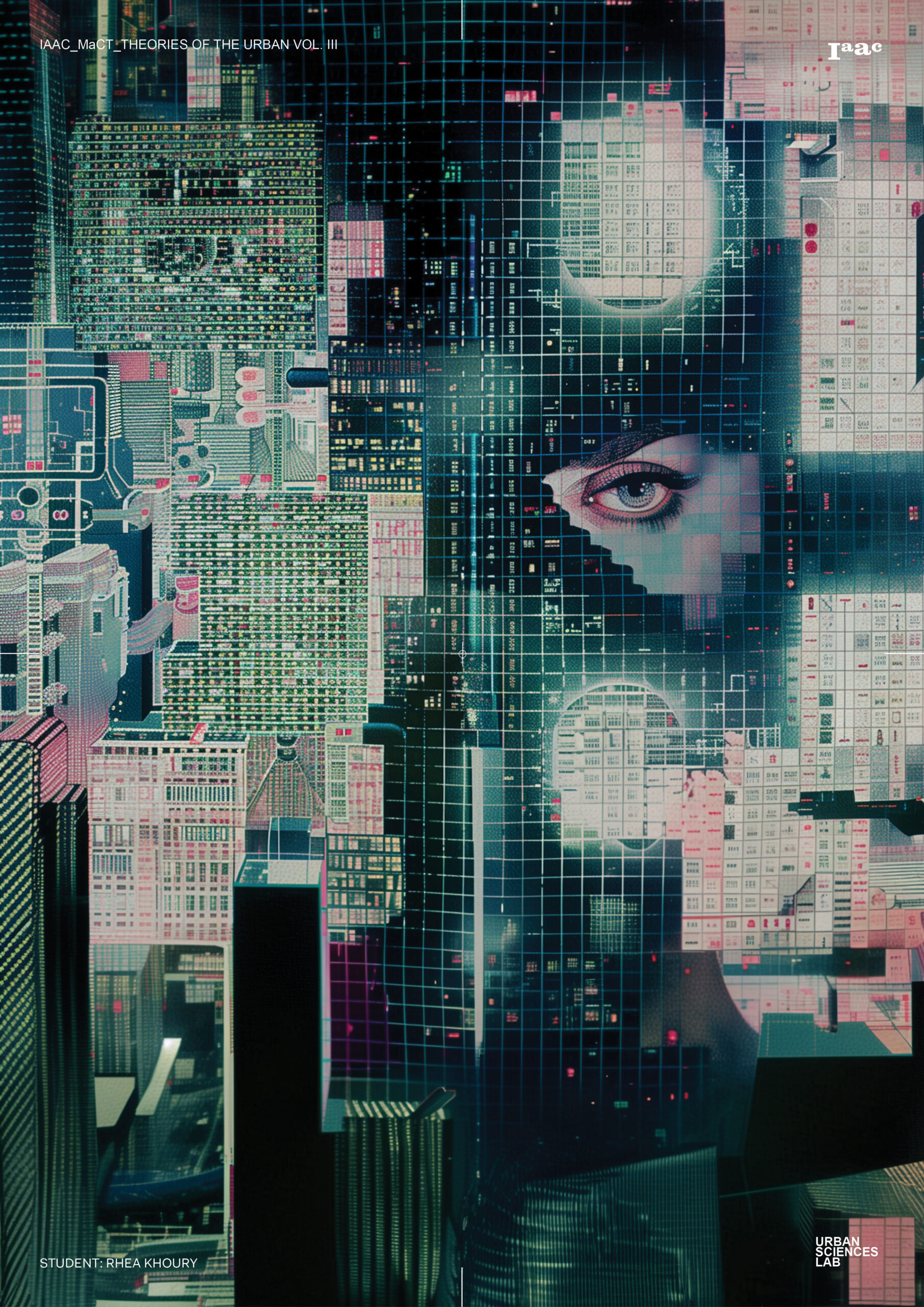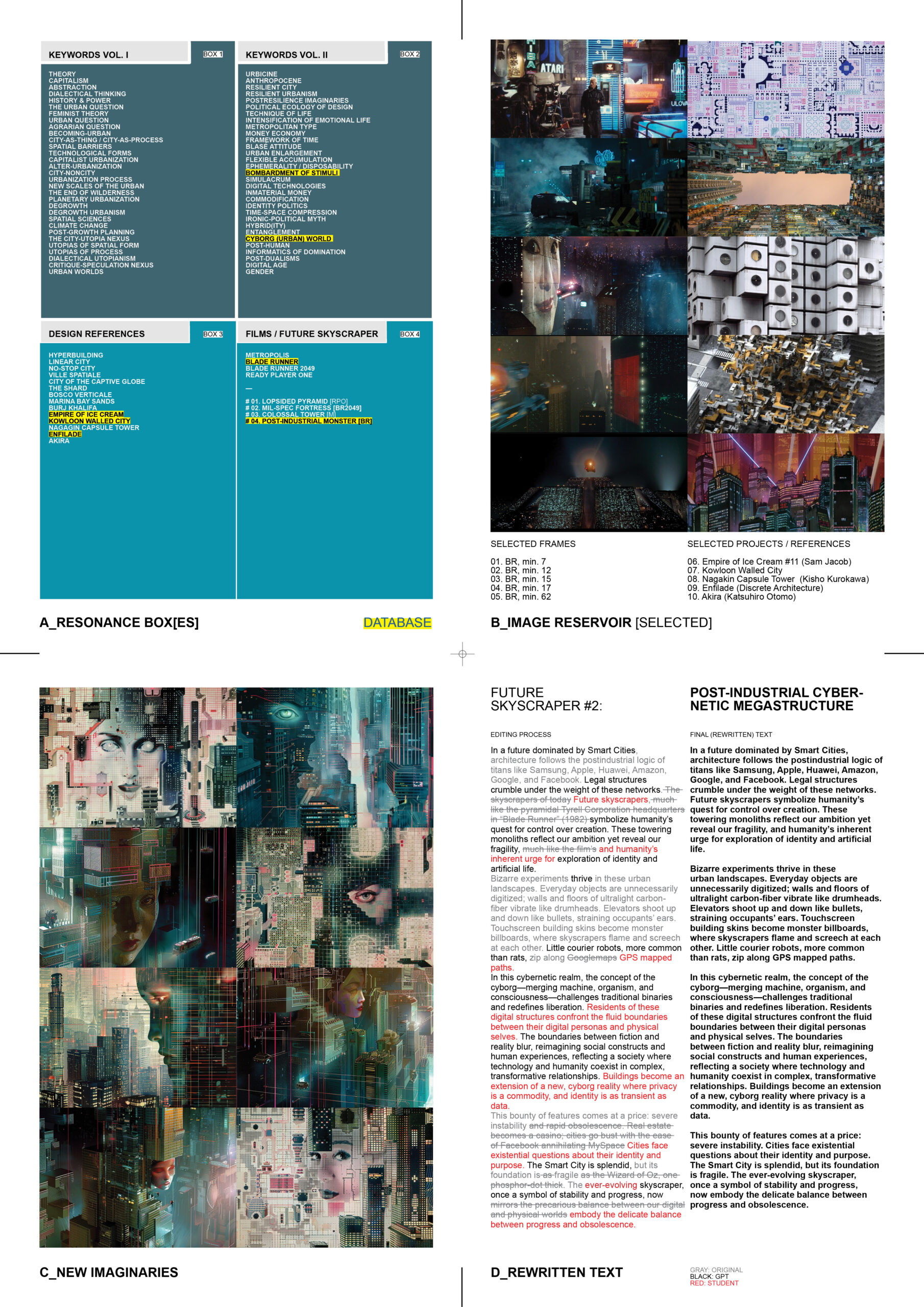Sterling, B (2015) imagined four fictitious scenarios of how future skyscrapers might be, differentially equalizing the state of technology and the economic-political climate:
Future skyscraper 1: Huge, lopsided pyramid
Future skyscraper 2: No-nonsense, mil-spec fortress
Future skyscraper 3: Colossal, awkward tower
Future skyscraper 4: Postindustrial, digitized monster
In our fourth scenario, the advanced use of technology enables the creation of postindustrial, digitized skyscrapers reminiscent of the dystopian vision in Ridley Scott’s “Blade Runner” (1982). These towering structures, dominated by corporate titans like Tyrell Corporation, represent humanity’s relentless quest for control over creation. The skyscrapers in this world are both a testament to human ambition and a mirror of our inherent fragility, highlighting our unending pursuit of identity and artificial life. The urban landscape is rife with bizarre experiments and hyper-digitization.
In this cybernetic realm, the concept of the cyborg—merging machine, organism, and consciousness—challenges traditional binaries and redefines liberation. Residents of these digital structures navigate fluid boundaries between their digital personas and physical selves. The lines between fiction and reality blur, reimagining social constructs and human experiences, reflecting a society where technology and humanity coexist in complex, transformative relationships. Buildings become extensions of a new, cyborg reality where privacy is a commodity, and identity is as transient as data.



